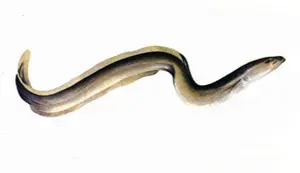
One of the most fascinating fish is the eel. It lives for about twenty years in rivers that flow into the Baltic Sea and in the lakes connected to those rivers. It lives, but does not reproduce. Then comes the moment when an invisible force—some call it a calling—beckons the eel to embark on a long journey. Through the Kattegat and Skagerrak straits, across the North Sea to the distant Atlantic, to a sea without shores known as the Sargasso Sea. Here, the eel spawns and… meets its end.
The hatchlings that emerge from the eggs will spend three years making their way back to the Baltic, to the very rivers and lakes where their parents once lived. And after two decades, the cycle will begin anew…
How do eel larvae find their way back? It is said they follow their instincts. But that doesn’t explain much. Otters also instinctively eat berries to compensate for a lack of hydrochloric acid. Yet they eat berries, not bits of lime like chickens, which need lime for their eggshells.
So what drives the eel? Scientists believe that at different stages of its life, eels exhibit either an excess or a deficiency of salts in their blood. This prompts them to move, seeking the environment that their bodies require at various points in their development.
